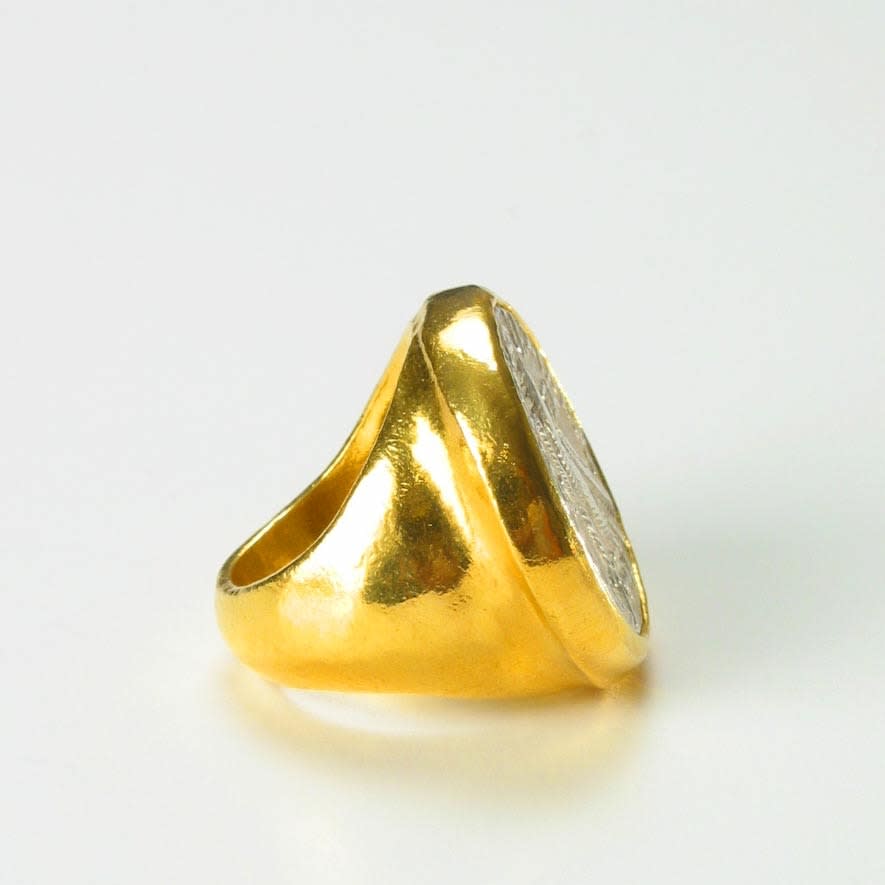Gold Ring with Silver Tetradrachm of King Ptolemy XII, 85 BCE - 51 BCE
Gold, Silver
FJ.7131
Further images
Following the death of Alexander the Great, his empire was divided between his three generals, each of whom set up their own kingdoms. One of them, Ptolemy, took Egypt as...
Following the death of Alexander the Great, his empire was divided between his three generals, each of whom set up their own kingdoms. One of them, Ptolemy, took Egypt as his share and made Alexandria his capital. Ruling as Ptolemy I Soter, he established the last dynasty to rule Egypt with the title of Pharaoh. For the next two and a half centuries, the Ptolemaic Dynasty of Greeks controlled Egypt, mingling Hellenic traditions with the mighty legacy of the Pharaohs. Ptolemy XII Neos Dionysos was the illegitimate son of Lathyros (Ptolemy IX Soter II) and fled to the court of Mithradates VI of Pontus following the death of his father. Having deposed Ptolemy XI Alexander II, the people of Egypt remembered the illegitimate son of their previous ruler and he ascended the throne as Ptolemy XII, although he referred to himself as “Theos Philopator Philadelphos Neos Dionysos.” He was married to his sister, Cleopatra V Tryphaena but is perhaps best known as the father of the celebrated, ambitious Cleopatra VII, destined to be the last of the Ptolemies. The glories of antiquity shine again with renewed brilliance and luster. The legend surrounding Ptolemy XII, and his notorious daughter Cleopatra, becomes reality when this ring is worn. The past literally comes alive. This ancient coin is a shining vestige of the ancient glory of Egypt under Greek rule passed from the hands of civilization to civilization, from generation to generation. However, unlike much of antiquity, it is not a relic of the past displayed behind glass in a museum; but mounted in this ring, the coin is a stunning centerpiece appreciated for its age as much as its beauty and superior craftsmanship





